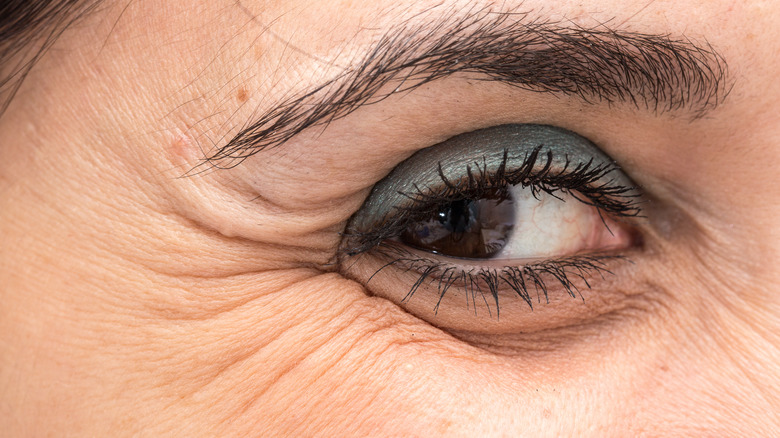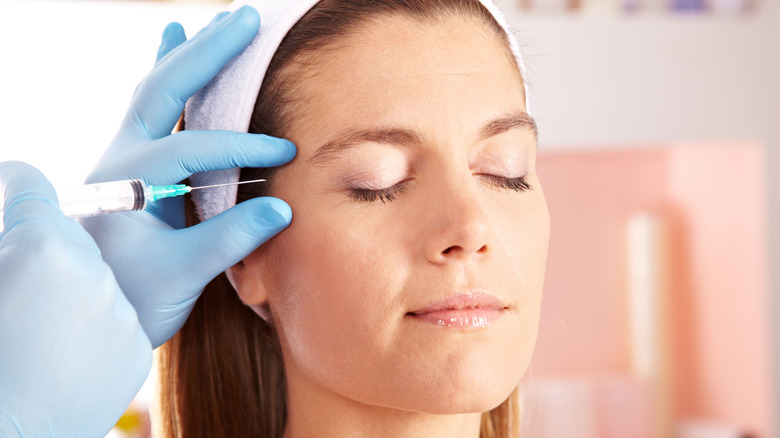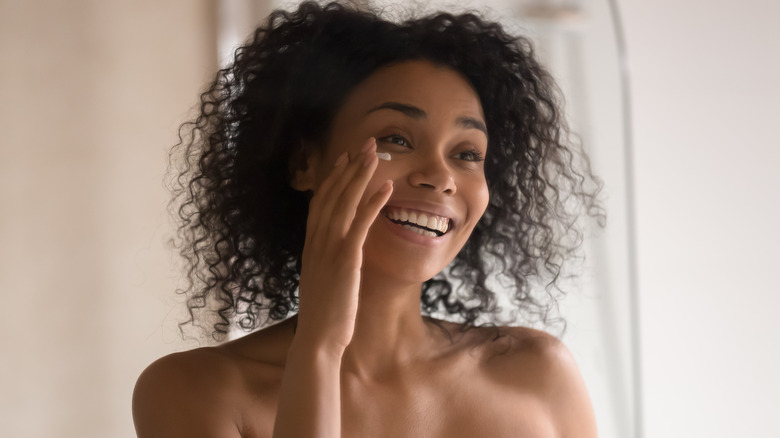Are Crow's Feet Permanent? Here's What We Know
Sooner or later, everyone will notice a few fine lines cropping up on their face. Indeed, aging isn't something to be feared but celebrated. Still, hardly anybody particularly desires wrinkles, so when you see a line pop up here and there, you may wonder what you can do about it.
Crow's feet are typically one of the first lines people notice as they age. These lines that appear at the edges of your eye, known as the periorbital region, as per MedicalNews Today, are caused by the combination of the skin losing elasticity and collagen and undergoing repetitive muscle movements. Though smiling is typically the leading cause, any repetitive motion, such as opening and closing your eyes, can contribute.
Once you notice crow's feet crop up in your eye region, which can begin in your mid-30s, you may look for ways to get rid of them for good.
Getting rid of crow's feet
Once you have crow's feet, there are some ways to treat the fine lines, but they often require a more somewhat invasive approach, such as Botox injections. "The muscles around the eye contact and lead to line formations, which is how tiny injections of neuromodulators help reduce the look of crow's feet," dermatologist Dr. Sherwin Parik tells Good Housekeeping. "They also prevent future lines from getting deeper by inhibiting constant muscular contraction and tension."
Another top treatment is using lasers to help reduce the fine lines and boost collagen growth."Lasers and microneedling can help, but must be used with absolute precision around the eyes to avoid any damage," explains Dr. Parikh.
However, Botox and lasers work as a temporary fix. Though they may mask crow's feet for a while, the lines will eventually return. Treatment will need to be ongoing since if you stop, the lines will come back.
Topicals can lessen the appearance of crow's feet
Suppose you can't afford or don't want lasers or Botox. In that case, topical treatments can help minimize crow's feet, such as chemical peels that include glycolic acid or alpha hydroxy or applying prescription-strength Retinol topically (via Cleveland Clinic).
Certain over-the-counter skin creams contain less effective medications than prescription creams but can help minimize crow's feet by hydrating and plumping up the outer eye area. Look for creams that contain Retinol or peptides. Peptide creams are made of amino acids that help boost collagen and plump the skin.
Prevention is everything when it comes to crow's feet. Though some people are genetically predisposed to these lines, everyone can benefit from following a few lifestyle habits to keep lines at a minimum. Don't smoke, stay out of the sun or wear sunscreen and a hat when in it, and reduce stress, which can result in recurrent frowns and squints. Drink plenty of water to keep your skin supple, exfoliate to remove dead skin, and moisturize regularly.


